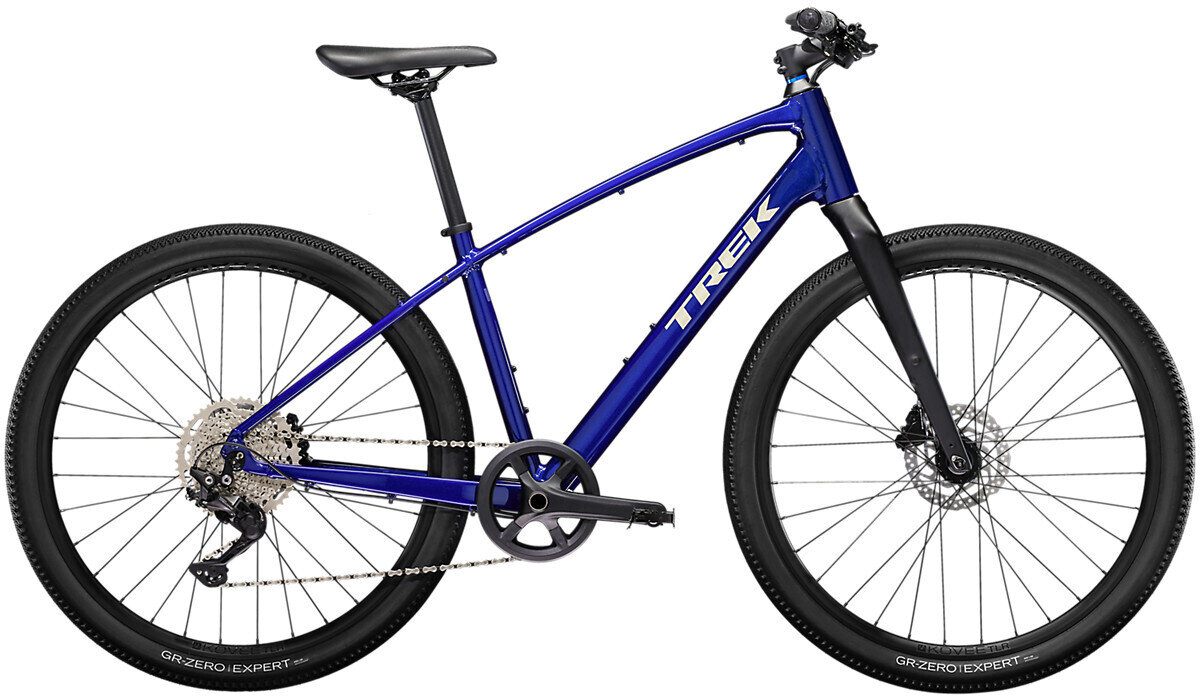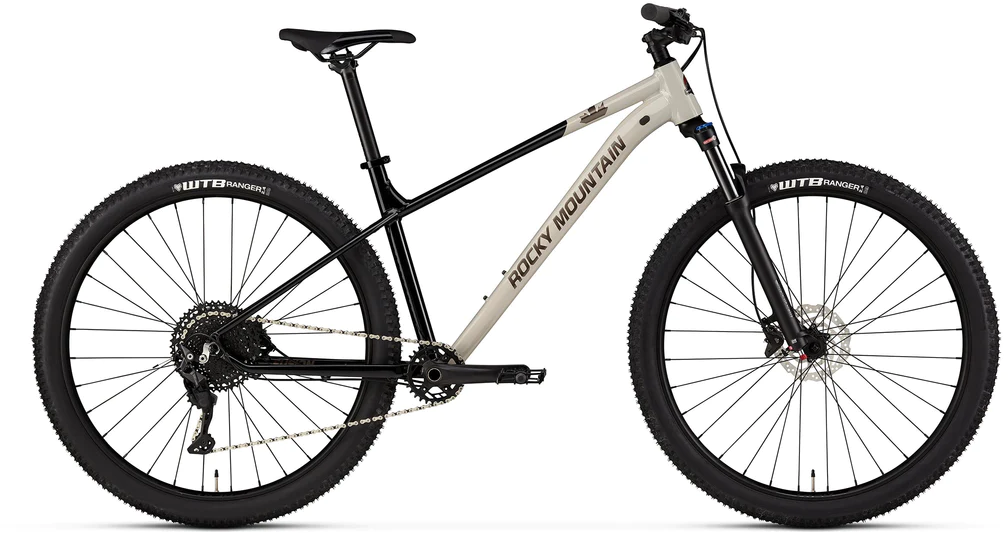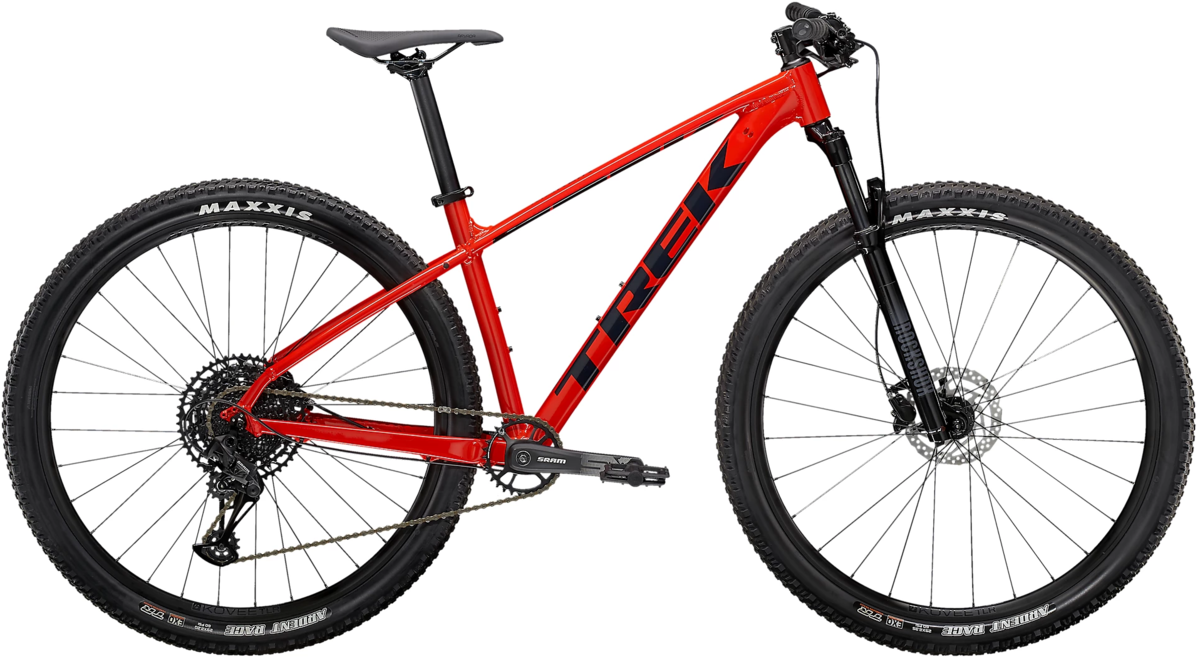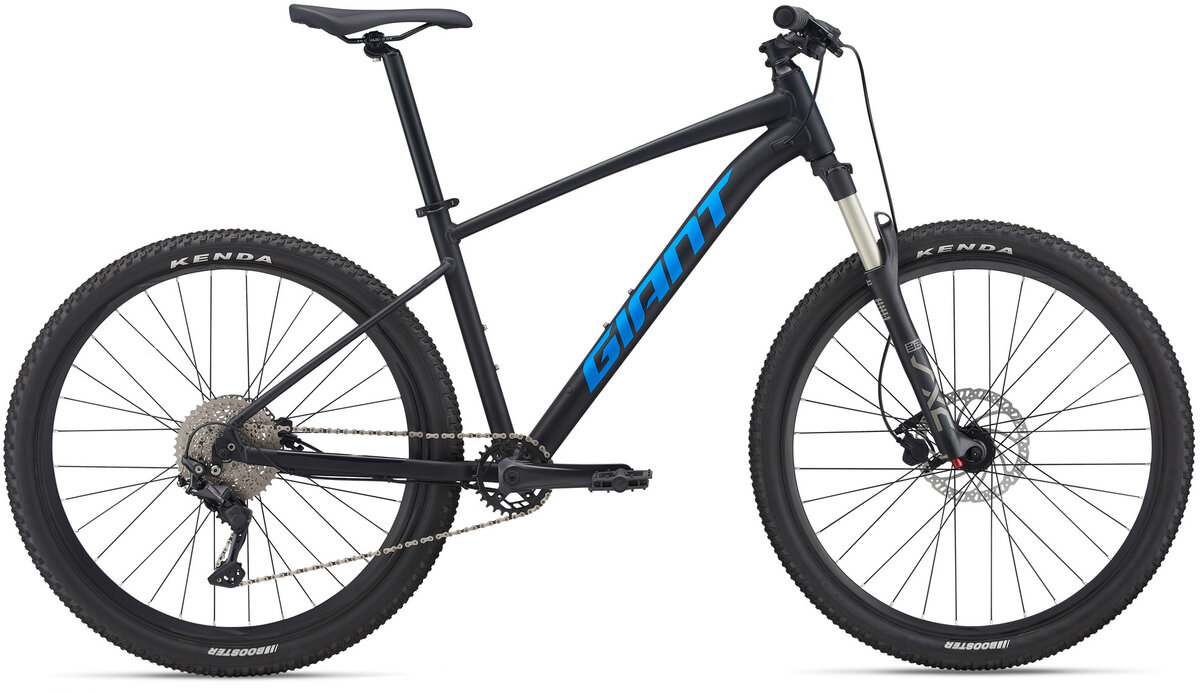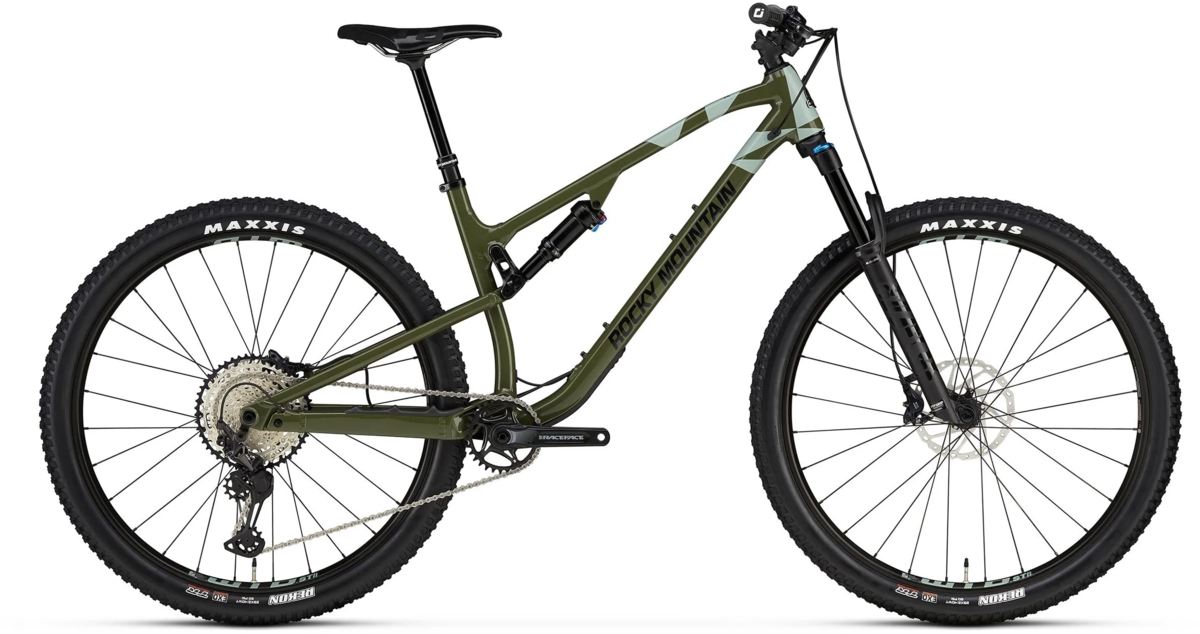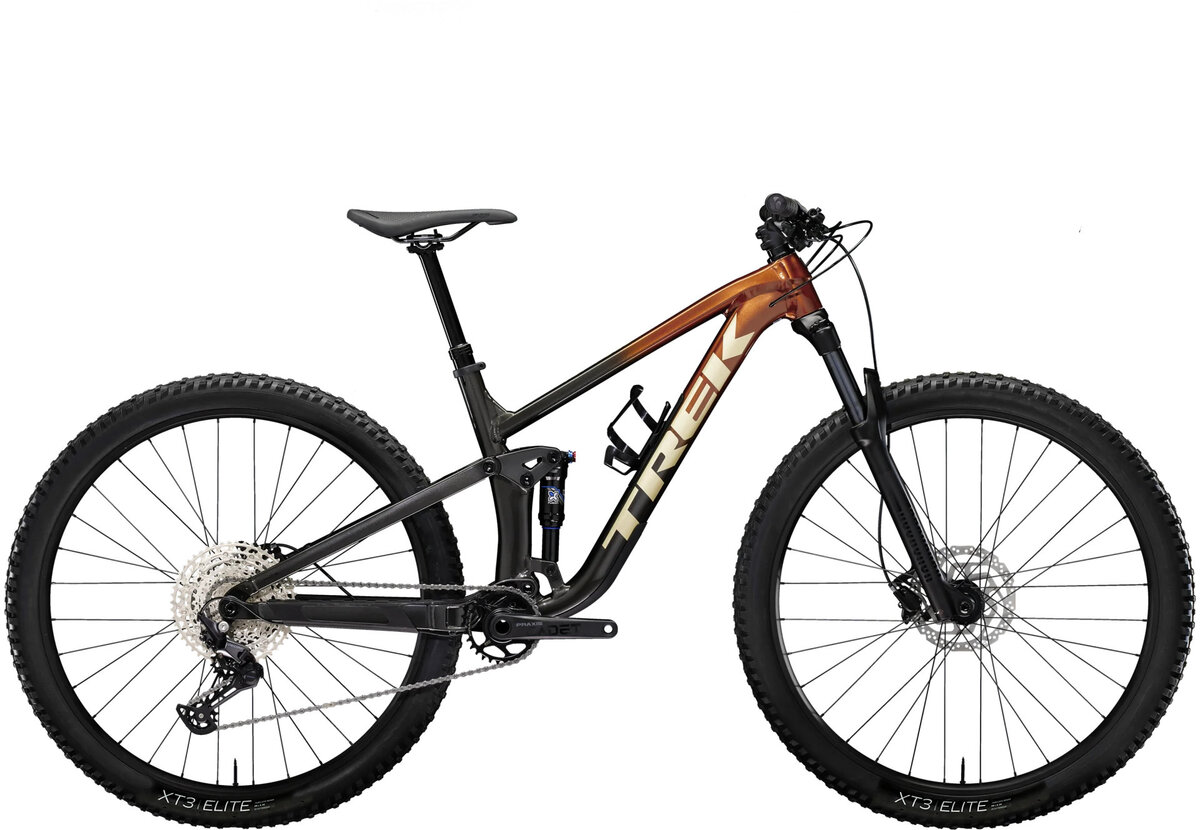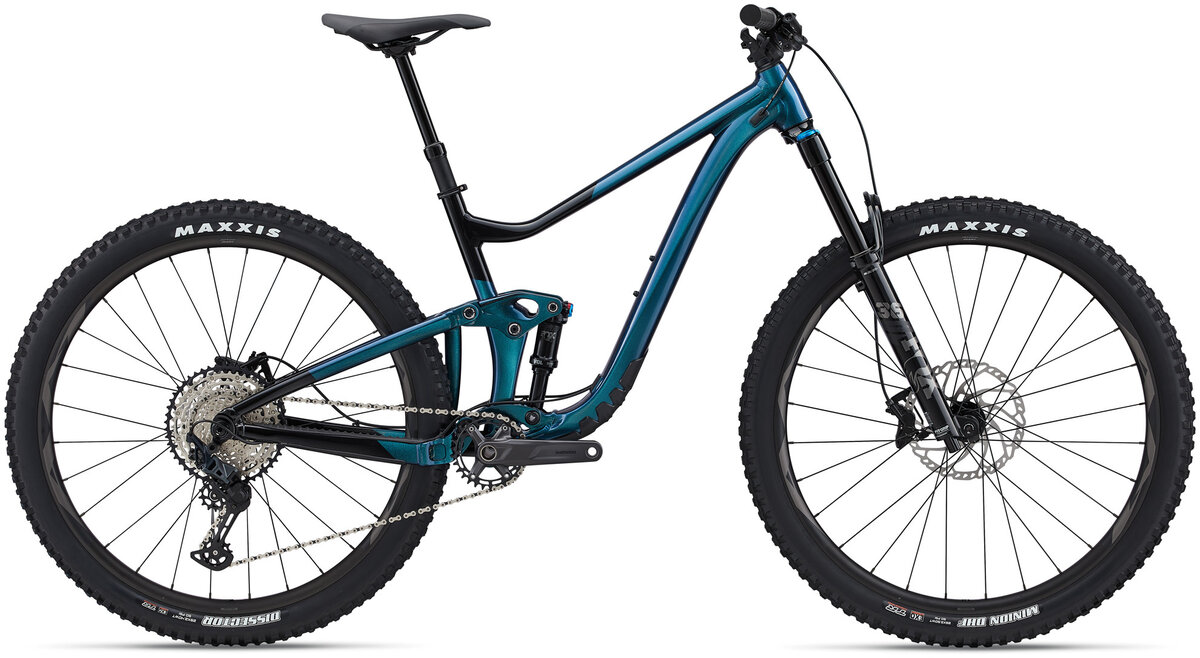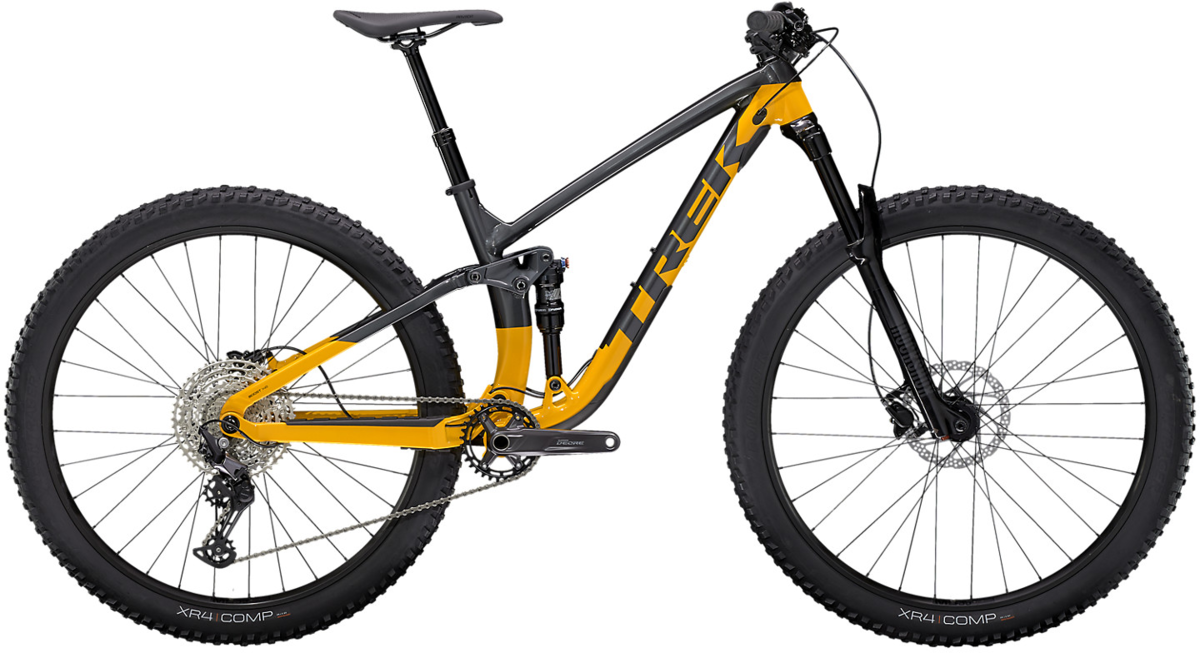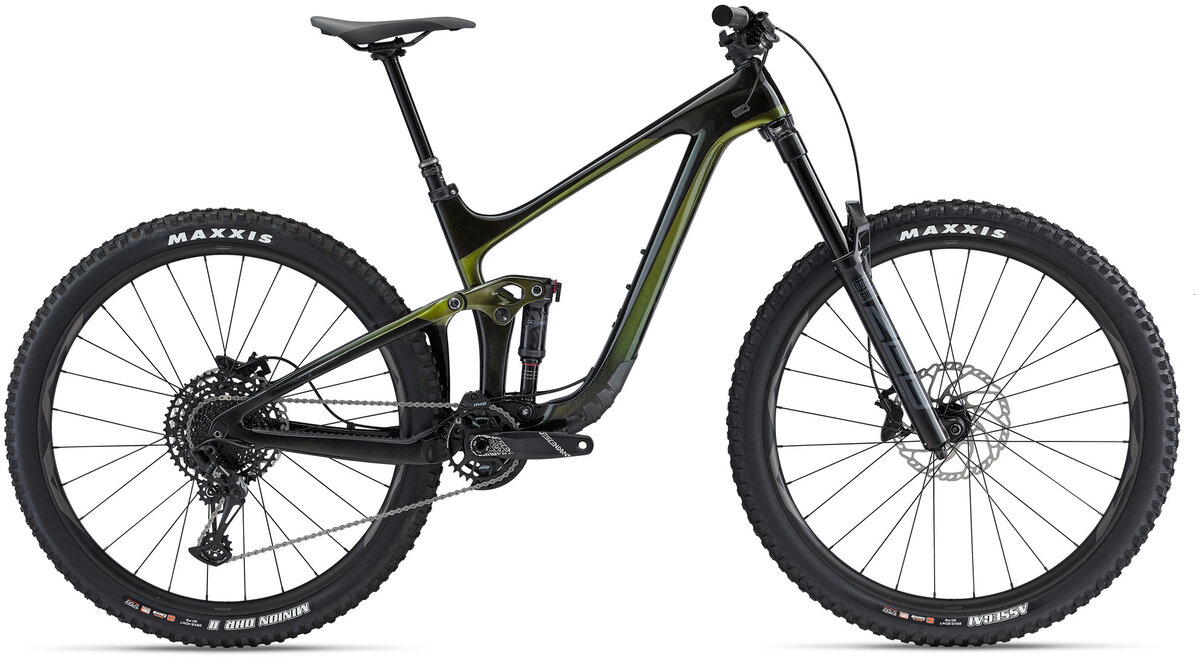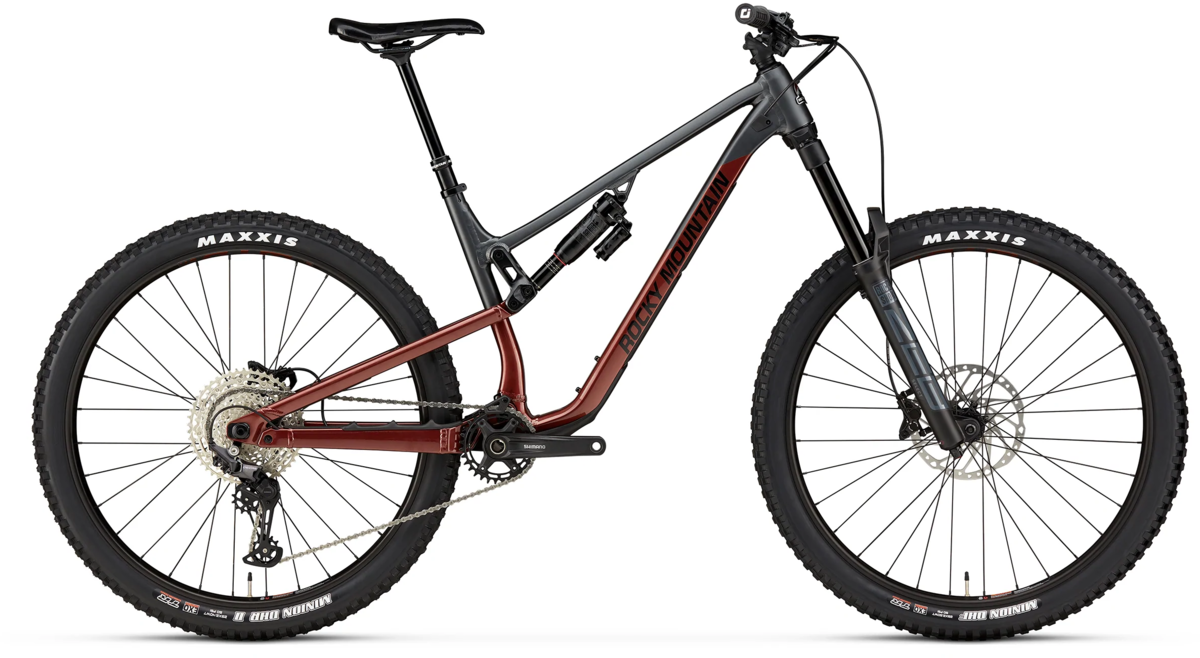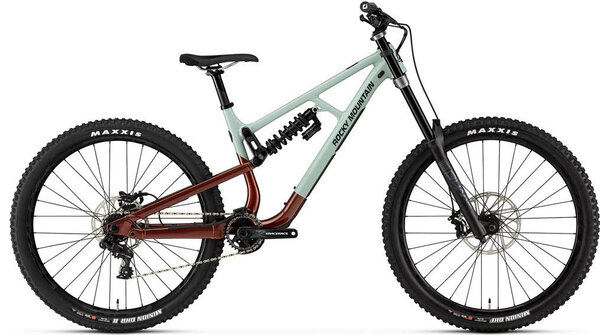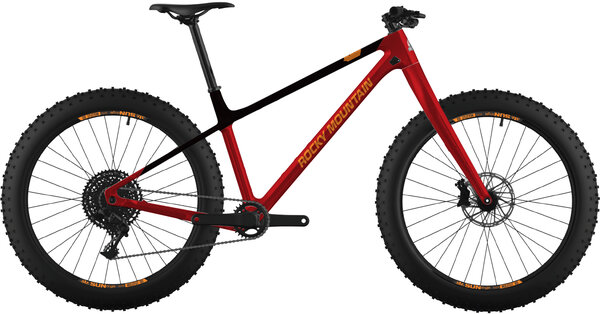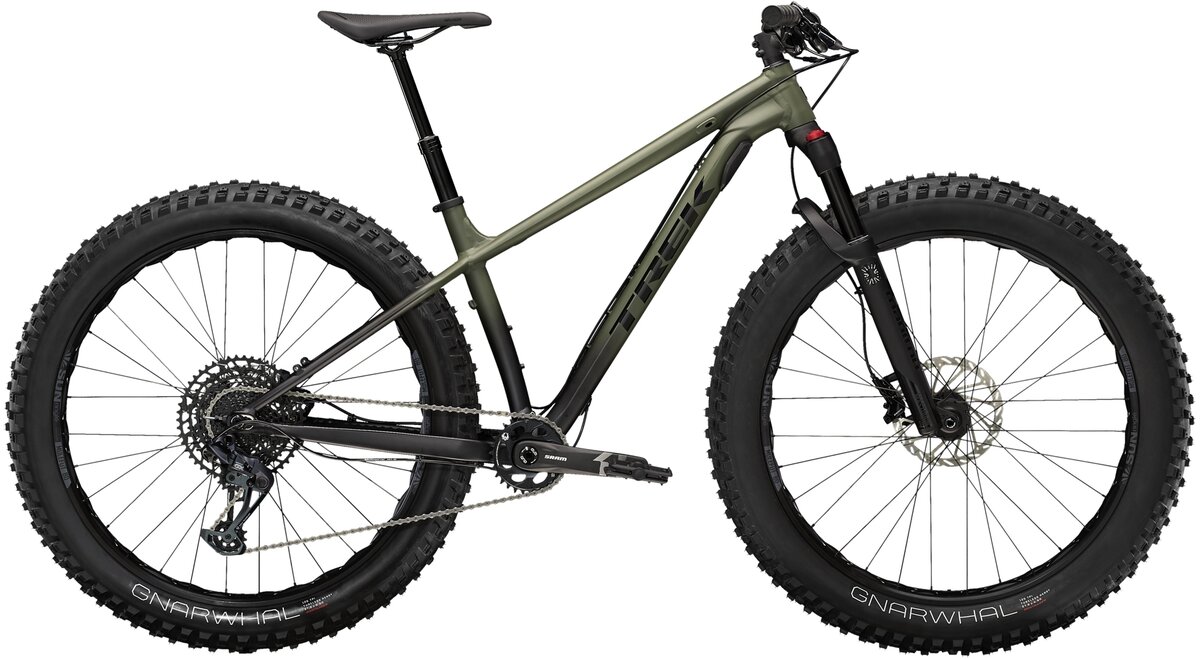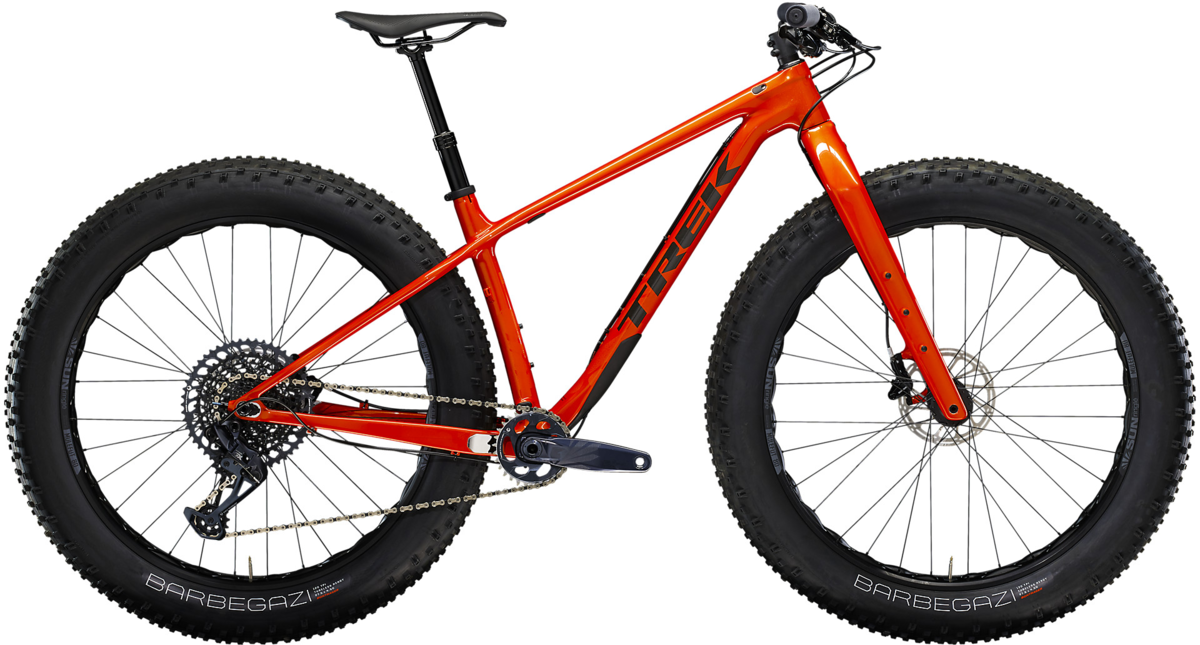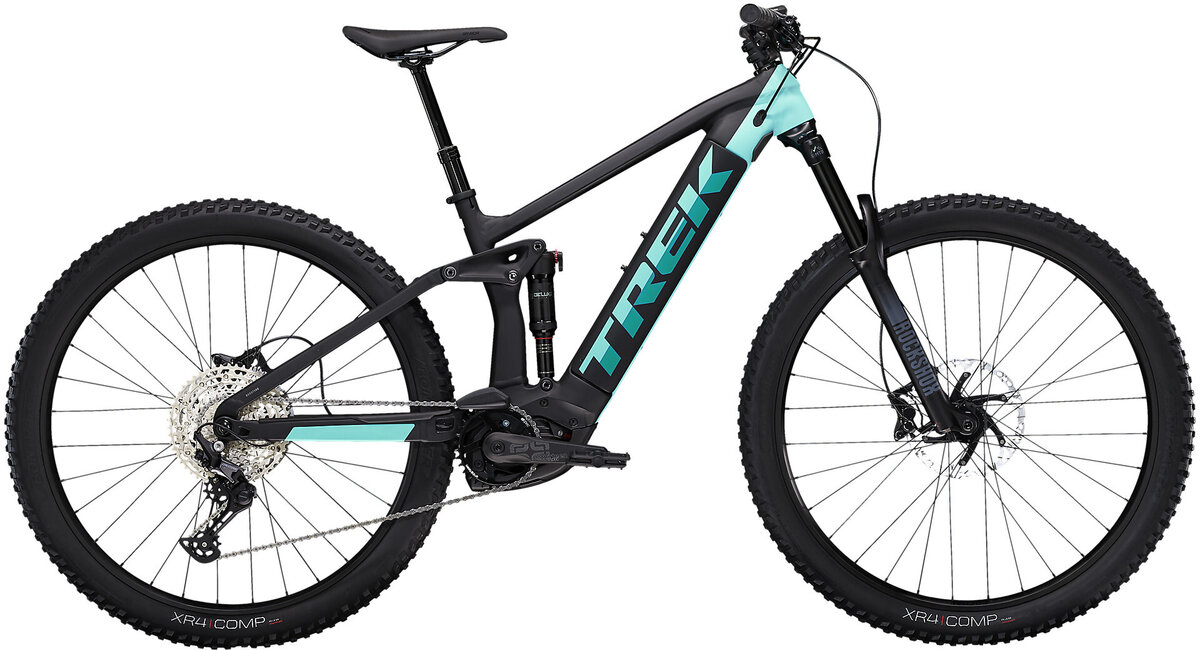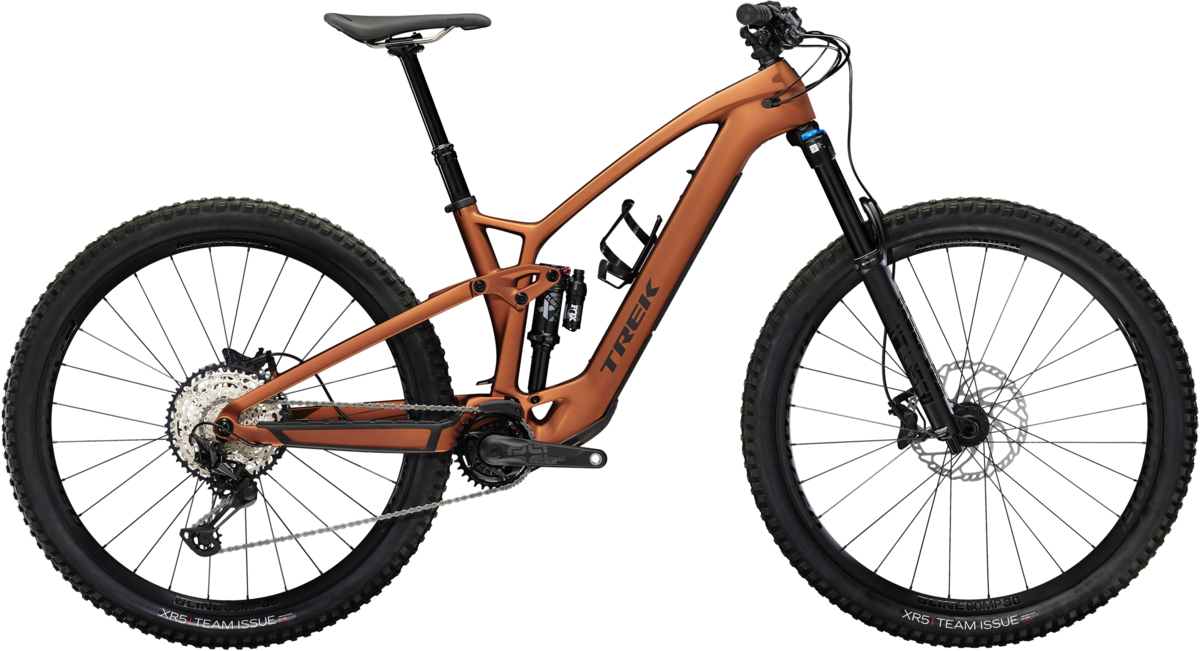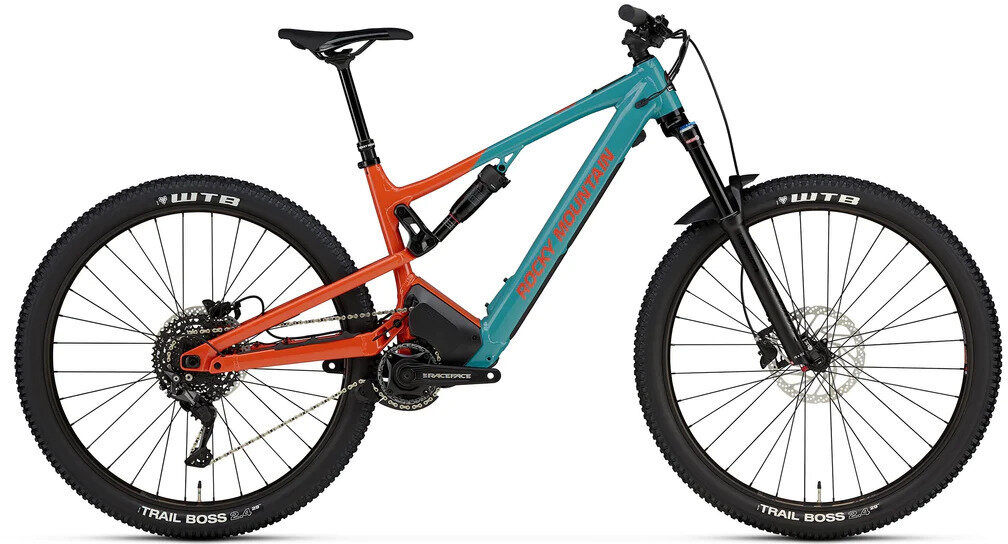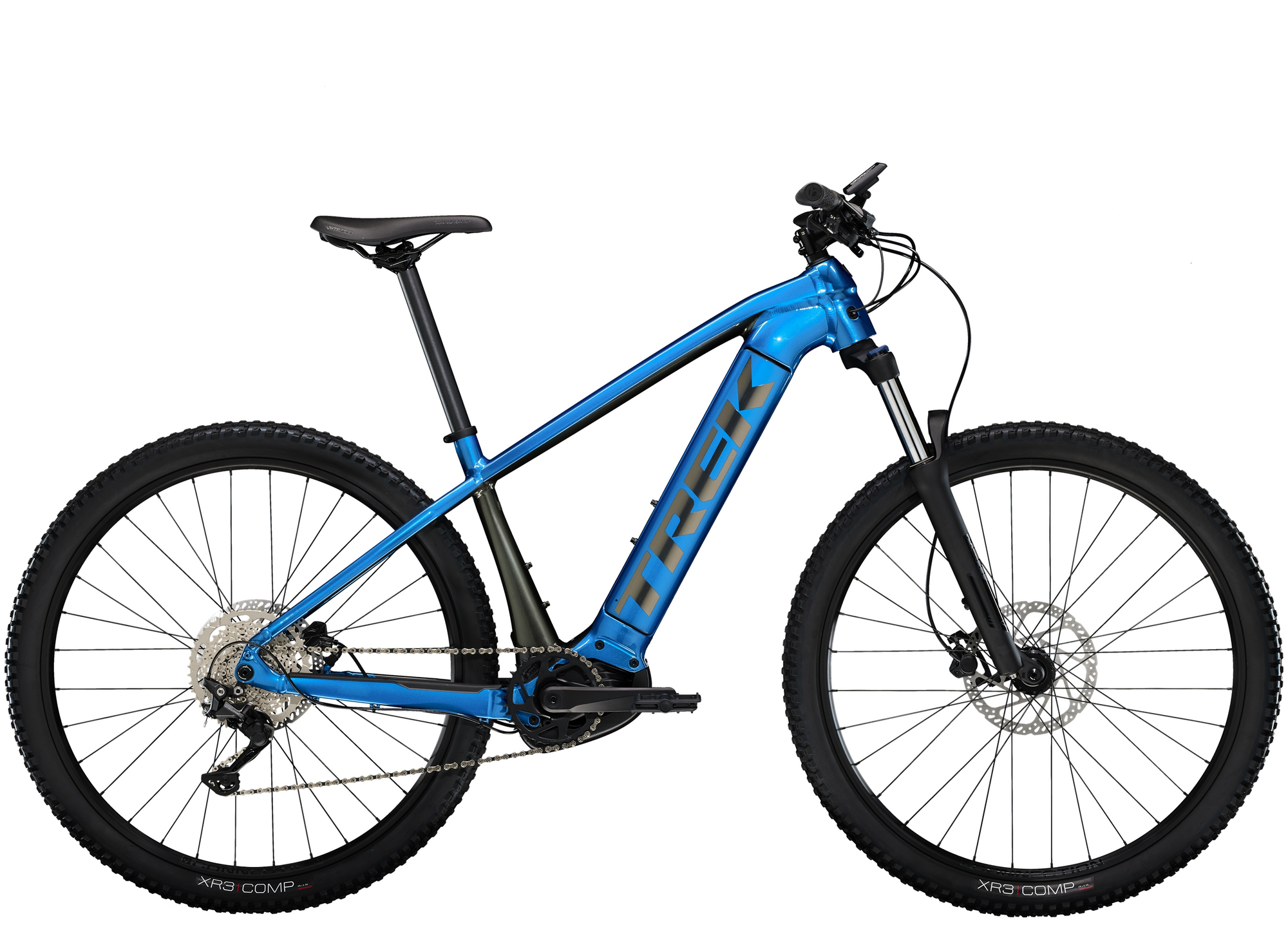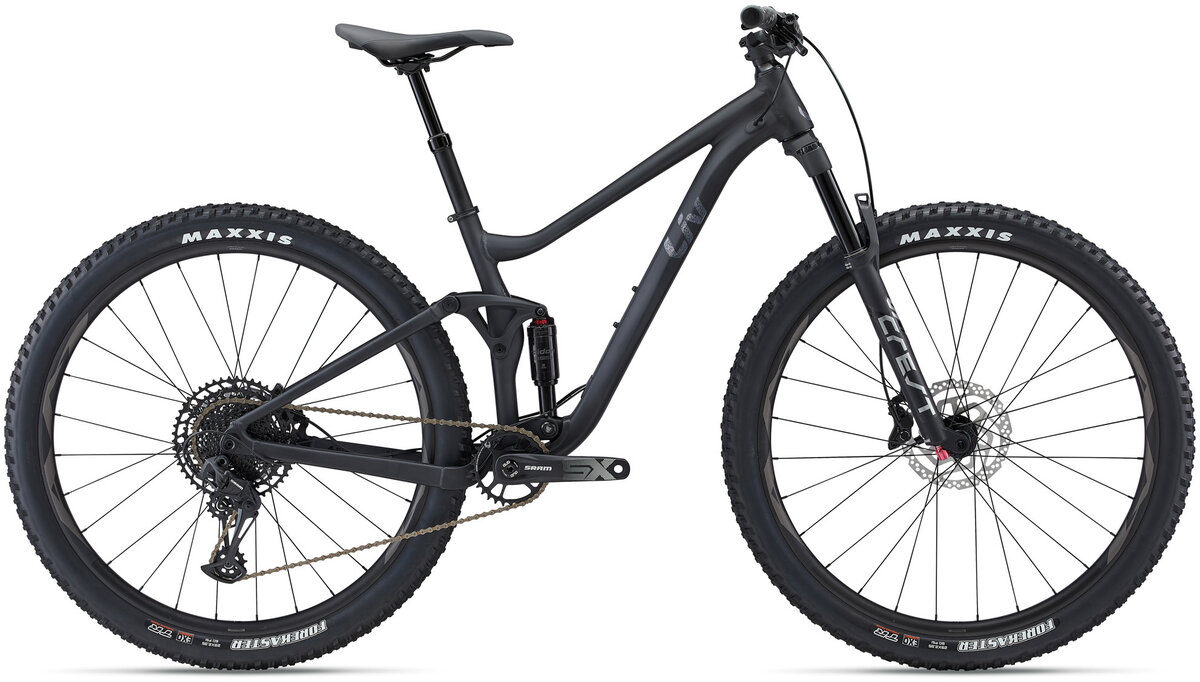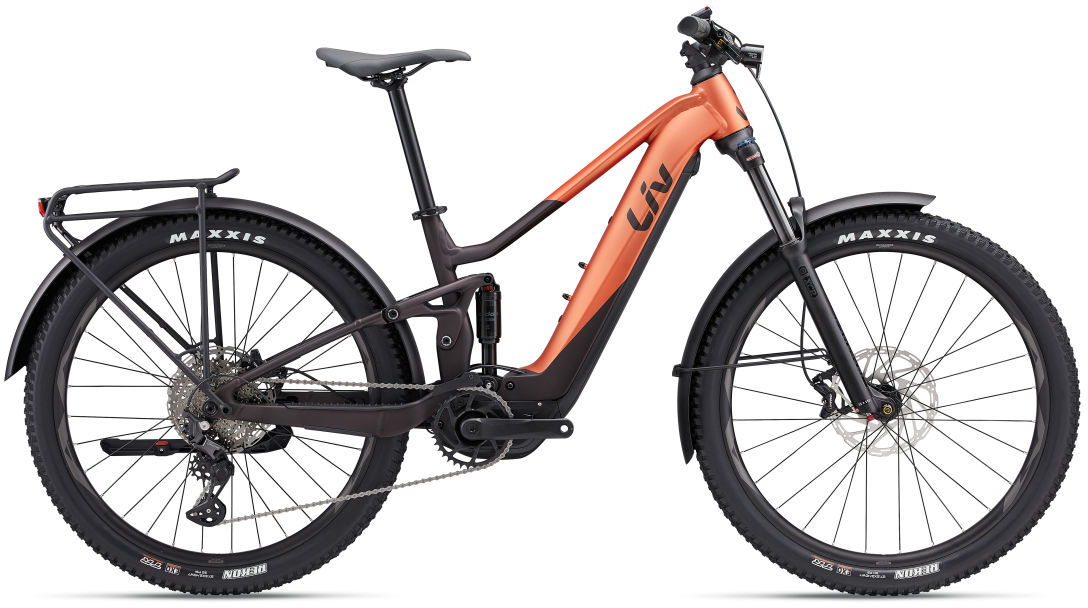How To Choose A Mountain Bike
Buying a mountain bike opens a whole new world of trails and areas to explore. To help you through how to choose the right mountain bike, we’ve put together this buyer’s guide with tips on what to consider as well as our favorite models.
Whether you’re an MTB beginner or a seasoned off-road rider, this guide points you in the direction of your ideal setup. Narrow in on your preferred style and features, then pick the correct size for your dream mountain bike. Keep reading to learn everything to look out for when shopping for your next mountain bike!
| XC | Trail/All-mountain | Enduro | Downhill | Fat biking | Recreational | |
|---|---|---|---|---|---|---|
| Terrain type | XC races, forest paths, singletrack | Singletrack, rock gardens | Enduro races, bike parks, rock gardens | Bike parks, shuttle-serviced areas | Snow, ice, sand, forest paths | Bike paths, mixed-surface roads |
| Front suspension | 100-120mm | 10-150mm | 140-180mm | 180-200mm | Rigid / 120mm | 60-100mm |
| Rear suspension | Optional, 60-100mm | 120-150mm | 130-170mm | 160-200mm | Rigid | No rear shock |
Beginner considerations
Having a grasp on the basics can get you far in how to choose a mountain bike. If you’re buying your first mountain bike or want a better understanding on what to look for, begin by thinking about the following factors that determine how a mountain bike performs out on the trail.
Styles of mountain bikes
The first step in searching for a mountain bike is thinking about how and where you will be riding. Deciding on riding style significantly pares down your search so you can more easily compare models and geek out on smaller details. Consider the type of trails you currently ride as well as the terrain you want to ride to find a mountain bike that matches your goals.
There are several types of mountain bikes designed for specific terrain and conditions. To get the most out of your next mountain bike, hone in on which of the following riding styles suits you the best:
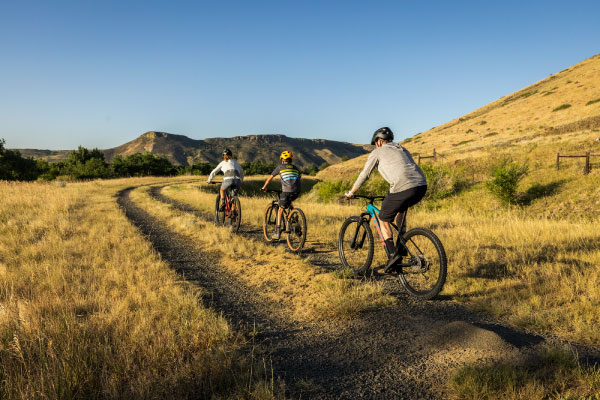
Recreational Mountain Bikes
Recreational mountain bikes are a cost-effective way to start exploring the trails, providing excellent performance for solid value. These entry-level models often feature lightweight aluminum frames, front suspension, and medium-tread tires.
Recreational MTBs are perfect for bike paths and detours over light terrain like unpaved roads or gravel— they also work as rugged commuters. If you’re wanting to test the waters of mountain biking, these bikes are a great place to start.
Common specs: ~100mm front travel, 1x or 3x chainrings, upright geometry
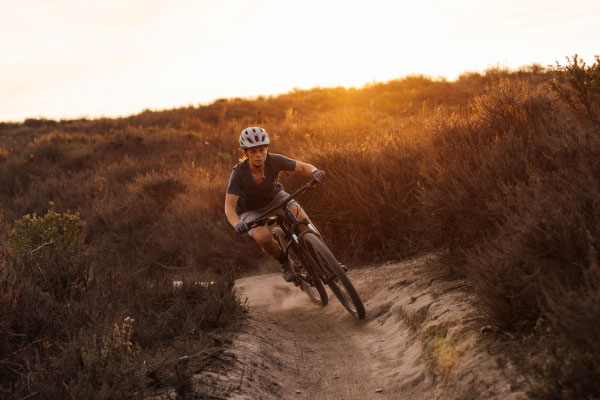
Cross-country (XC) Mountain Bikes
XC mountain bikes are designed for fast-paced racing around cross-country circuits where trails are smoother and less technical. Climbing efficiency is key so XC bikes keep weight to a minimum and most only have front suspension, typically between 100-120mm of travel.
A steeper head tube angle offers agile handling and the lightly treaded tires roll fast, although they’re not as appropriate for chunkier rough terrain. Choose this category if you’re interested in XC racing or typically stick to lighter, fast-flowing trails with plenty of climbing.
Common specs: 100-120mm front travel, 1x gearing, rear travel optional
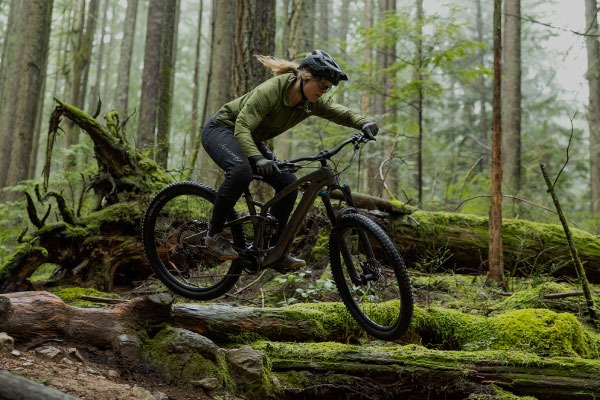
Trail Mountain Bikes
Mountain bikes in the "trail" category, usually called "trail bikes", are designed to be capable on all kinds of mountain terrain. These bikes occupy a happy medium between the light and fast XC bikes and more downhill focused models. Trail bikes do it all!
If you're looking for a bike that has a great balance of uphill efficiency and downhill capability, trail bikes are where you should start your search.
Common specs: 130–150mm travel, full suspension
Enduro Mountain Bikes
These bikes are built for enduro riding that's based on a mountain bike racing discipline where riders are timed on downhill sections but not on the climbs. The focus on descending on gravity riding lengthens the suspension travel and slackens the head tube angles for increased stability over steep, chunky terrain.
Riders still need to make it up the climbs, so enduro bikes balance efficiency, low weight, and downhill capabilities. Enduro bikes feel at home during races, bike parks, and riding areas with big terrain with plenty of rocks, jumps, and drops.
Common specs: 130–180mm travel, full suspension
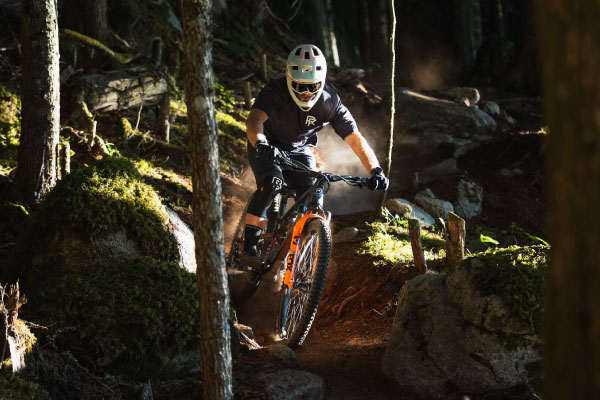
Downhill Mountain Bikes
Downhill (DH) bikes are designed for descending routes in chairlift or shuttle-assisted areas where there’s chunky terrain and the biggest jumps. They have the longest suspension travel to absorb impacts and keep you in control at high speeds downhill.
Common specs: 180-200mm travel, full-suspension, double-crown fork
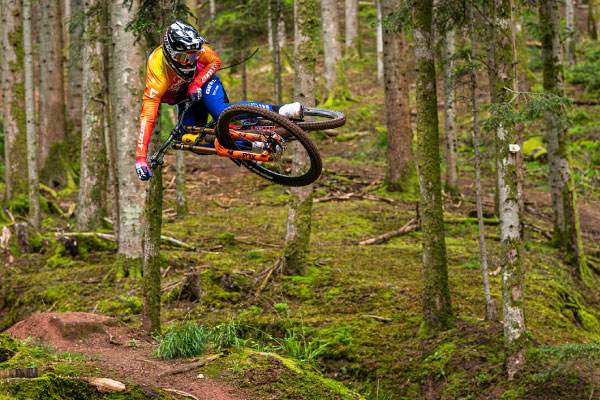
Fat Bikes
Named after their oversized tires, fat bikes feel at home in the sand or snow. The tires measure between 3.7” to 5” inches with huge air volume that enables riders to float over terrain and obtain sufficient traction. The cushion provided by the ultra-wide tires compensates for the lack of suspension in their rigid frames.
Common specs: Fat tires, rigid frame
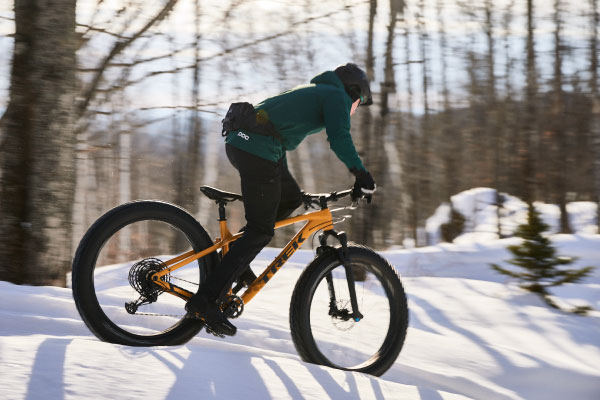
Mountain bike suspension setups
When picking out a mountain bike, you’ll have to decide between a full-suspension bike or a hardtail or a bike without suspension.
Full suspension models come with a front suspension fork and a rear shock whereas hardtails only have the suspension fork.
Mountain bikers rely on suspension to tame the trails and keep the wheels of the bike in contact with the ground for maximum traction.
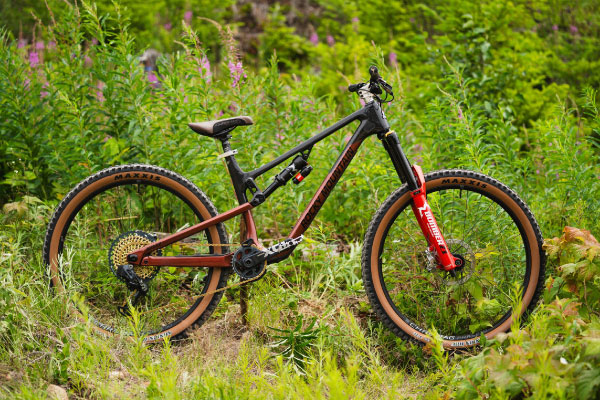
Full suspension mountain bikes:
Having both a suspension fork and rear shock at your disposal means you can take on bigger and rougher terrain.
The full suspension pairing absorbs heavy impacts and provides high levels of traction for a smoother ride, even over the chunky stuff.
Modern rear suspension has reduced the pedal bob effect from climbing on a full-sus bike so they can ride uphill more efficiently.
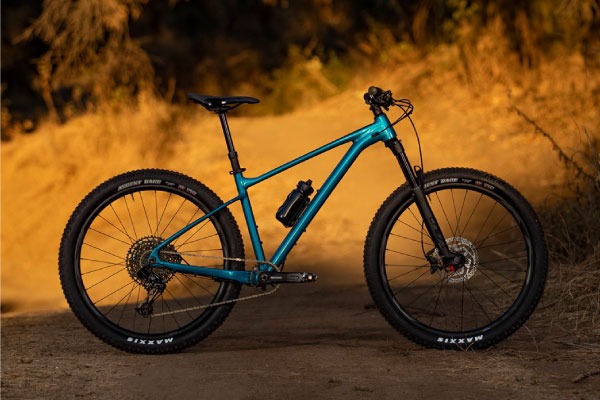
Hardtail mountain bikes:
Hardtails forgo a rear shock and rely instead on their front suspension fork to absorb trail impacts. The lack of a rear shock save weight and increases power transfer from the pedal stroke, making it a popular choice for XC riders.
Some trail-oriented hardtails feature slacker geometry and wider tires to better handle rougher terrain.
Hardtails are a great option for riders with a smaller budget or who typically stick to XC-style terrain.
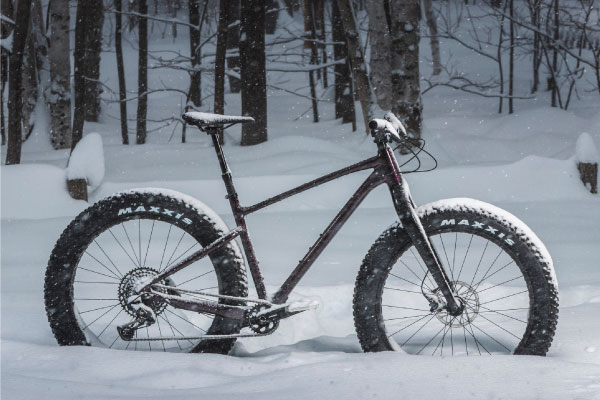
Rigid mountain bikes:
Rigid mountain bikes don’t have any suspension. Most fat tire bikes have rigid frames because their oversized tires offer adequate cushion out on the trails.
Mountain bike wheel sizes
Another choice you’ll have to make when browsing mountain bikes is wheel size: 27.5” or 29”? Some models are only available with one wheel size whereas others give riders the option to choose.
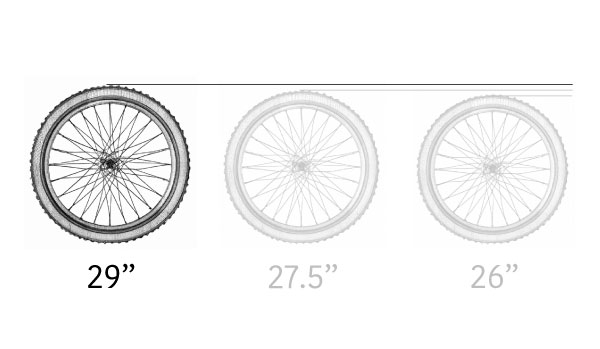
29-inch:
These wheels have a larger diameter of 29” that lets riders more easily roll over big obstacles like rocks and logs.
The increased size can make handling feel more involved while the faster rolling momentum is a desired benefit. 29ers are popular choices on XC and downhill mountain bikes.
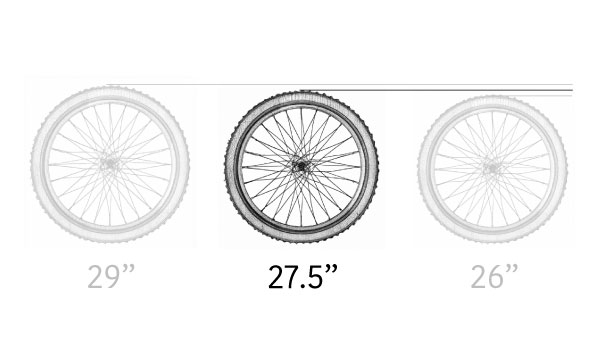
27.5-inch:
These wheels are slightly smaller than 29ers, making them feel a bit more playful and agile over technical terrain with tight corners. There’s quick acceleration and roll similarly fast to their 29” counterparts.
It’s a popular wheel size for trail and recreational mountain biking. Smaller 27.5” wheels are often outfitted on XS or S mountain bikes to achieve a more balanced frame geometry.
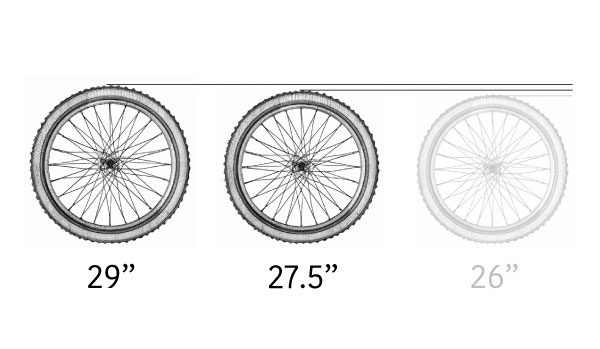
Mixed-wheel:
“Mullet” bikes have a 29er wheel at the front and a smaller 27.5” at the rear. Riders report having a better ability to roll over obstacles on the 29er combined with the agile maneuverability of the 27.5” wheel. Many trail and enduro riders swear by the benefits of a mixed-wheel setup.
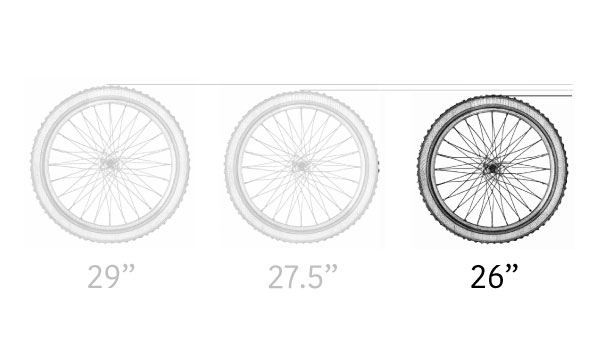
26-inch:
26” wheels used to be the standard size for mountain bikes back in the day, but now they are typically used on dirt jump bikes and youth-sized models.
Mountain bike frame sizes
Picking the correct size lets you experience a mountain bike as closely to as it was originally intended and engineered. A mismatch between rider height and frame size can lead to discomfort, inefficient pedaling, and cumbersome handling.
Most brands these days list their models’ frame options according to Alpha sizing. However, it’s always best to check the model size chart of a specific bike for more details— it’s typically included directly on the webpage.
Some models feature frame size-specific wheels for a more balanced overall fit on the bike. For example, many XS or S mountain bikes are only available with 27.5” wheels while the larger frame sizes may have 29er wheels.
Below is an example mountain bike size chart from Trek to give you an idea, but each brand sizes their bikes slightly differently.
Mountain Bike Size Chart | |||||||
|---|---|---|---|---|---|---|---|
| Alpha size | XS | S | M | ML | L | XL | XXL |
| Frame size | 13.5 | 15.5 | 17.5 | 18.5 | 19.5 | 21.5 | 23 |
| Rider height | 147-155 cm 4’9”-5’1” | 153-162 cm 5’2”-5’4” | 161-172 cm 5’3”-5’8” | 170-179 cm 5’7”-5’10” | 177-188 cm 5’10”-6’2” | 186-196 cm 6’1”-6’5” | 195-203 cm 6’4”-6’8” |
Advanced considerations
For MTBers looking to upgrade their specific setup or love to nerd out about parts, there’s a whole host of more advanced considerations. Or if you simply want to make the best-informed decision possible, take a deep dive into the details below. Peel back the layers behind mountain bike frame materials, suspension design, geometry, and more!
Frame material
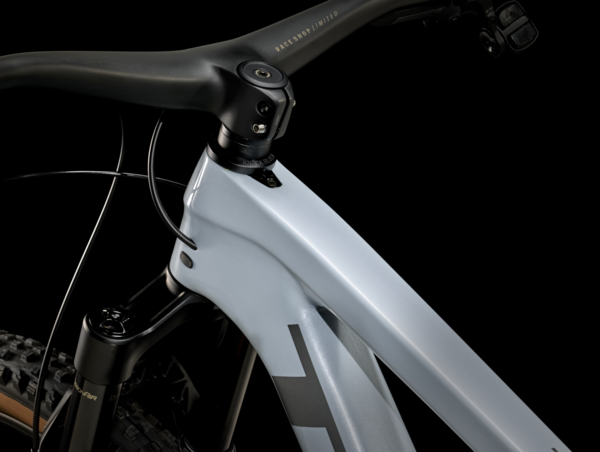
The frame contributes greatly to a bike’s weight, ride feel, and overall price. Aluminum and carbon fiber are the most common materials used in mountain bike frames, but some models are made from steel or titanium.
Carbon fiber is desirable because of its high strength and low weight. Carbon frames are generally more expensive because of the complex manufacturing process, as well as being used on bikes with higher-end components.
Aluminum is heavier than carbon but provides great value considering its strength and durability. Budget-level aluminum alloys are significantly heavier, while modern, high-end aluminum frames are giving carbon setups a run for their money. Aluminum mountain bikes are a smart choice for budget-conscious riders.
Other mountain bikes are built from steel or titanium. Steel is known for its impressive toughness and can be repaired if damaged, but is relatively heavy. Titanium frames are very light and durable but the expensive metal is reserved for only the highest-end mountain bikes.
Frame features
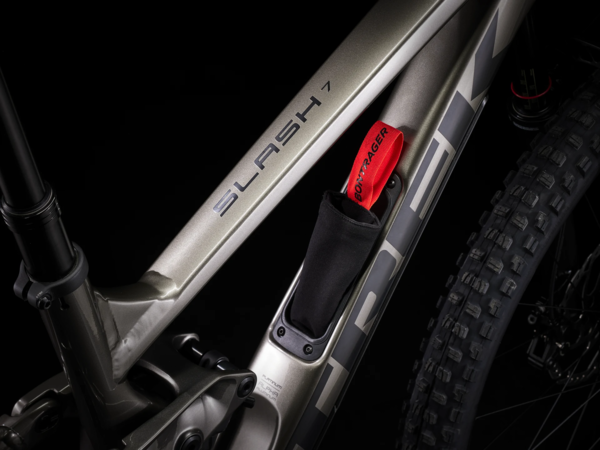
Frames are far more than their material and flashy paint job— there are often convenient features integrated inside or onto the bike’s frame. They might not be obvious at first glance, but details like frame guards and internal cable routing can keep your bike in great condition for longer.
Additional touches like downtube storage and frame mounts to carry gear can really come in handy out on the trails. Some bikes have small flip chips built into the frame to slightly alter the geometry or suspension performance. Brands are getting creative with how much they include in this area, so be sure to take a look at what’s out there.
Suspension travel & design
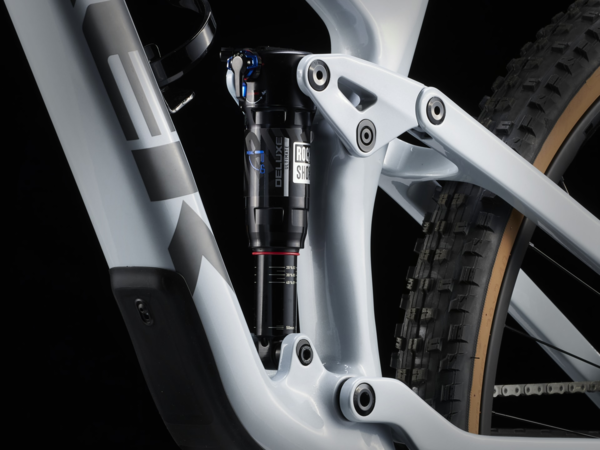
It’s important to consider the length of travel and suspension design of the mountain bike you’re interested in. Too much travel for the terrain and you’ll lose efficiency whereas too little travel can prevent riders from taking on the big jumps and drops.
Different suspension systems and linkage designs have different characteristics that translate into a certain feel out on the trail. A common dilemma is choosing between coil vs. air shocks. In general, air shocks are lighter and easily tuned while coil springs have a more supple feel and less maintenance.
Build kits
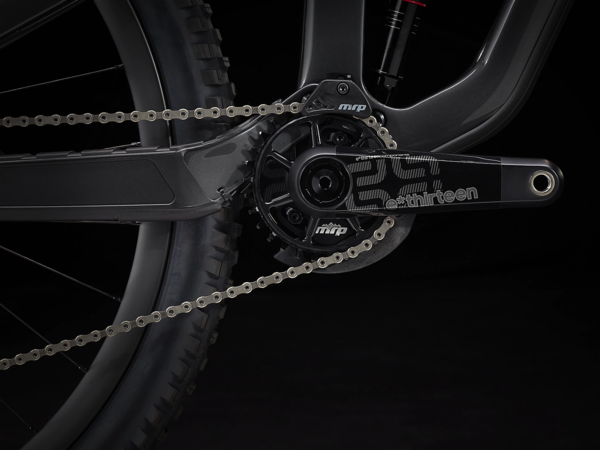
The same mountain bike model is often available with different “build kits”, or collection of components that make up the bike. These tiered options let riders find a version that fits their budget and needs— including the brakes, drivetrain, suspension fork and shock, wheels, frame material, etc. Higher-end build kits give benefits such as lower weight, more precise braking, better quality parts, and luxury upgrades like electronic shifting.
Geometry
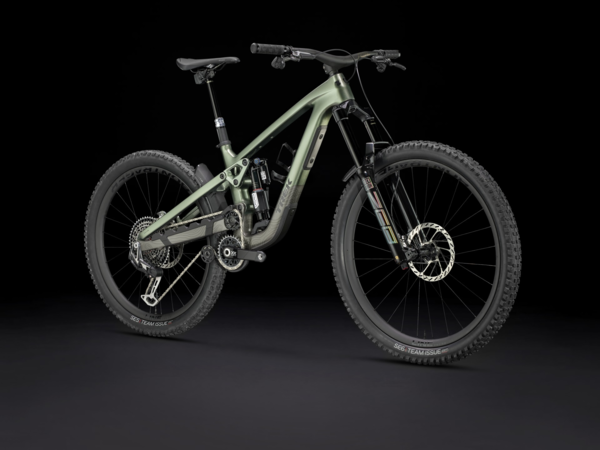
Frame geometry is critical to how a mountain bike feels on the trails. It can seem like a complicated world of numbers and angles but there’s reason behind all those measurements. You’ll hear brands talking about “slackness” which refers to a lower head tube angle to provide a stable ride at high speeds. A longer wheelbase and chainstay lengths can also contribute to more stable, controlled descents.
Reach is the horizontal length of the front of the bike, from the bottom bracket to the headtube. This can be a personal preference as a longer bike can feel more stable but not as maneuverable in tight corners. Shorter reach means more playful handling without going so far as to be twitchy at high speeds. XC bikes have relatively steep seat tube angles to push riders forward on the bike for better power on the climbs.
Frame size & fit
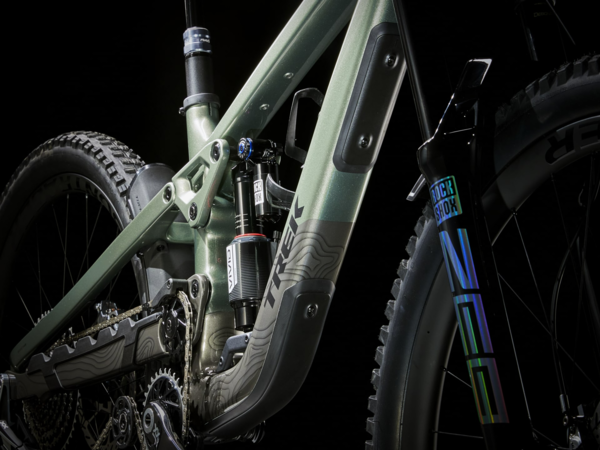
A mountain bike may tick all the boxes but if it doesn’t fit you well, you’ll be missing out on performance and comfort. Try to zero in on the size that best matches your measurements and the way you like to ride.
For riders caught between two recommended sizes, pick the one that aligns with your goals. A larger bike with an extended reach, for example, is great for advanced riders on chunky descents rather than a smaller frame with more playful geometry.
Bike fit doesn’t have universal rules because it depends on the rider’s body and preferences, so the best way to decide is by going for a ride or testing a few models!
MTB vs eMTB
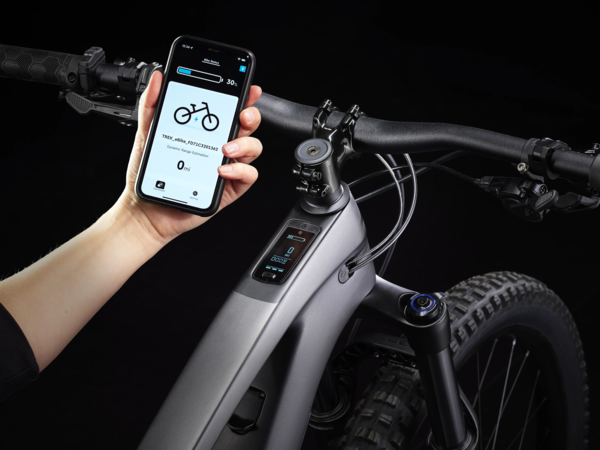
Electric mountain bikes— referred to as eMTBs— can transform the way you ride by shuttling you up the trails with pedal-assisted power. eMTBs take the sting out of steep hills so you can save your energy for the descents and reach remote areas across the mountain. They come in handy to reach routes that aren’t accessible by a chairlift or shuttle and can help you keep up with stronger riders.
Electric mountain bikes will cost more than your standard MTB and have added weight from the mid-drive motor. For the analog riders who want to continue relying on their own pedal power to go uphill, traditional mountain bikes cost less and offer a more strenuous workout!
Women’s specific design
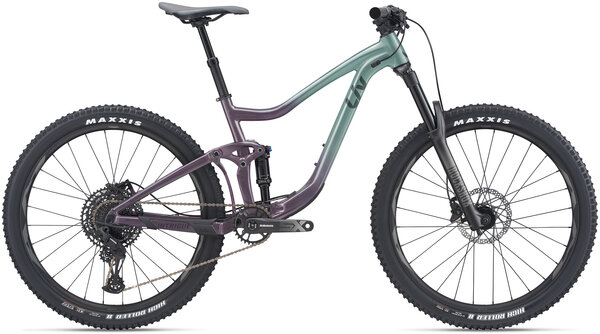
We think the more options, the better, and these days female cyclists can pick from tons of mountain bikes with women’s specific design (WSD). Brands like Liv Cycling focus solely on women’s bikes. Bikes with WSD tend to have smaller frame sizes available, lighter shock tuning, and a women-specific saddle.
There may also be customized geometry or narrower handlebars to reflect typical body differences between average male and female riders. Some female riders swear by WSD while others have found their dream bike in a standard offering, so the choice is really up to you.
Our Top MTB Recommendations
Sifting through all the mountain bikes available can be a tall order, so we’ve done the heavy lifting for you. Below are some of our favorite mountain bikes at Cranky’s Bike Shop that are a total blast out on the trails.
Best Recreation MTB
Best XC MTB
Best Trail MTB
Best Enduro MTB
Best Downhill MTB
Best Fatbike
Best eMTB
Best Women’s MTB
FAQs for choosing a mountain bike
How do I choose the right mountain bike?
Decide on your preferred riding style and begin narrowing down your search based on the suspension setup, frame material, wheel size, and componentry tier you want. Make sure to select the correct frame size and focus more on the aspects that are useful to the way you ride.
What is the difference between a cheap and expensive mountain bike?
Much of the price difference between a cheap and expensive mountain bike comes from the frame material and the quality of the components. These upgrades lead to more precise shifting and braking and smoother suspension. Carbon fiber bikes are more expensive than aluminum and higher-tier parts like hydraulic disc brakes and lightweight parts will drive the price up.
Is it better to have a bigger or smaller mountain bike?
If you’re in between frame sizes, choose the size that best suits your skills and riding style. A larger frame is more stable at high speeds over rough, steep descents. Recreational or less experienced riders can choose the smaller size for a more relaxed fit.
How do you know if a mountain bike is too big for you?
Common signs your mountain bike is too big include noticing that the handling feels cumbersome or that it’s difficult to make tight turns. You may be overly stretching out to reach the handlebars or struggling with front wheel grip since there is less weight over the front part of the bike.
Is it worth upgrading a cheap mountain bike?
Nostalgia aside, reviving a decades-old mountain bike is rarely worth the money if you’re planning to hit the trails hard. Mountain bike technology has advanced significantly and there are great models for competitive prices. That said, upgrades to entry-level modern MTBs can still make a big difference.
How expensive of a mountain bike do I need?
The exact answer will depend on your budget and riding style, but it’s important to remember that there are plenty of sweet deals out there that deliver great performance on the trails. Beginner riders don’t require a top-of-the-range mountain bike to have fun and develop their skills.
Are full-suspension mountain bikes worth it?
Full suspension mountain bikes are worth the extra money and weight if you expect to be riding singletrack, enduro terrain, or chunky downhill sections. Full-sus setups are a must for demanding terrains like bike parks and challenging rock gardens.
Can you ride hardtails on rough trails?
Of course! Hardtails can take on a huge variety of trails, however, the lack of rear suspension means you’ll likely need to ride a bit slower to have adequate control and traction. Some hardtails have plus-sized tires and extended forks for a more trail bike-oriented feel to them.

